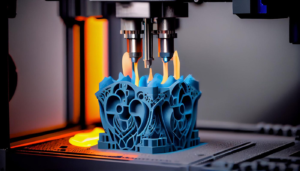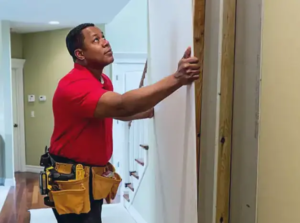Exterminator Woodland Hills is a professional who helps people get rid of pests in their homes or businesses. They use a variety of methods, including chemical treatments and traps. They also make recommendations for ongoing pest management.
They often work with distressed clients, so they must be able to communicate effectively and understand their concerns. They also need to keep accurate records of inspections, treatments and follow-up visits.

Exterminators use chemical treatments and natural remedies to eliminate pests in residential settings, including single-family homes, apartment complexes, and townhomes. They inspect each property to determine the best course of action for eradicating infestations, and they often work in cramped spaces like attics or crawl rooms.
Some residential exterminators offer preventative services in addition to their treatment options. These may include landscaping tactics, cleaning strategies, and preventing access to food sources that can attract insects or rodents. During these inspections, the exterminator will be able to spot potential problem areas before they become full-blown infestations. This is an important step in pest control, as an ounce of prevention is worth a pound of cure.
Exterminators also provide complete pest control services in both commercial and industrial settings. This includes identifying and eliminating pests that can damage equipment and products. In these settings, exterminators are often required to follow strict safety protocols, as they may be exposed to hazardous chemicals. They also help business owners determine the best practices for preventing pest intrusions, and they utilize a variety of methods to manage and control infestations, such as trapping, baiting, and blocking entry points into the building.
Commercial
Business owners have a lot on their plates, and while commercial pest control might fall lower on the to-do list than some other responsibilities, it’s an important one. Unwanted pests can affect your reputation, cause damage to inventory or equipment, and even shut down operations. And that’s just for starters – they can also spread dangerous diseases, destroy products and damage your building’s structure.
Your local Exterminator service provider will take a tailored approach to your unique property and needs, using industry-leading technology and methods that are safe for employees, customers, vendors, and the environment. They’ll start with a thorough inspection of your building, its structures and grounds, to identify entry points, problem areas and potential risk factors. Then they’ll share their findings with you and create a customized pest control treatment plan, including recurring treatments.
Your pest control expert will use a variety of techniques and treatments to keep your property pest-free, including exclusion services like sealing entry points, cleaning drains, removing debris, and more. They’ll also employ a combination of environmentally responsible baits, traps, and insecticides to eliminate the pests you want without harming those you don’t. Plus, they’ll use Integrated Pest Management to achieve long-term pest prevention. This approach uses pesticides as a last resort and emphasizes the use of non-chemical approaches, such as sanitation, habitat modification, and exclusion. Then they’ll monitor and assess the results, making changes to their strategy as needed.
Industrial
Pest infestations are dangerous to human health and can cause property damage. They can also lead to expensive repairs and downtime. If you’re struggling with a pest problem, contact an exterminator for fast, effective service. A professional will provide a thorough inspection of your property and recommend the right treatment.
Pest control technicians are trained to identify, prevent, and control pests in residential and commercial settings. They use a variety of methods, including chemical treatments, traps, and exclusion techniques. They may also educate their clients on prevention methods, such as improving sanitation and sealing cracks and gaps in a building.
Many types of pests can invade industrial environments, and some can pose serious health and safety risks to employees and customers. These include rodents, birds, and insects. Industrial pest control services are designed to protect facilities from pests and keep them productive, safe, and compliant with regulations.
Some exterminators specialize in particular types of pests. For example, if you have an infestation of bees, you’ll want to hire a specialist who is familiar with bee removal and relocation. Other exterminators focus on specific environments, such as warehouses. In a warehouse, pest problems can threaten product quality and safety, leading to costly downtime and shutdowns.
A career as an exterminator can be stressful and physically demanding. This is because of the nature of their work, which involves working in a range of environments, both indoor and outdoor. Additionally, they often work with hazardous chemicals and must be able to follow strict safety protocols to protect themselves and others.
To become an exterminator, you need to have a high school diploma or equivalent. In addition to classroom and on-the-job training, you’ll need to pass the Pest Control Technician Examination. You’ll also need to maintain a valid pest control license throughout your career. In addition, some employers require their employees to obtain first aid certification. The demand for pest control technicians is high, so you’ll have plenty of options if you decide to pursue this career.
Warehouse
Warehouses are busy, high-traffic areas where employees are focused on getting orders out the door. That means that when pests show up, it’s a big problem that can cause huge disruptions. Pests damage inventory, contaminate products and create health risks for staff members. That’s why a comprehensive pest control program is essential for all warehouses.
Keeping warehouses pest-free starts with good sanitation practices. This includes fixing leaks, storing food in airtight containers and regularly rotating stock. It also means avoiding leaving empty pallets lying around and using trash bins with tight lids. However, these basic procedures won’t keep out warehouse pests like ants, roaches, beetles and moths. Warehouses offer all three things that these pests need to survive: food, water and shelter. They’re also an ideal habitat for them because of their large size. This is why it’s important to work with a professional pest control company that understands the challenges of warehouses.
While some warehouse pests, such as roaches and rodents, are well-known and instantly recognizable, others can go unnoticed for a long time. This is especially true of beetles and moths that target dry foods like cereal, flour, nuts, pet food and even produce. In addition to being difficult to spot, these beetles and moths are often resistant to common insecticides. As a result, it’s important to use baits and other non-toxic pest control methods.
A serious infestation in a warehouse can lead to contaminated products, load rejections and costly shutdowns. That’s why it’s critical to work with a warehouse pest control company that knows how to prevent pest problems before they arise.
The team at Arrow Exterminators is highly experienced in building warehousing pest control programs that can help protect product quality, keep employees safe and provide a clean and sanitary environment for staff. We offer a variety of warehousing pest control services, including rodent exclusion, fly control, bird management and more. We can customize a warehousing pest control plan for your needs that will ensure a pest-free facility.


